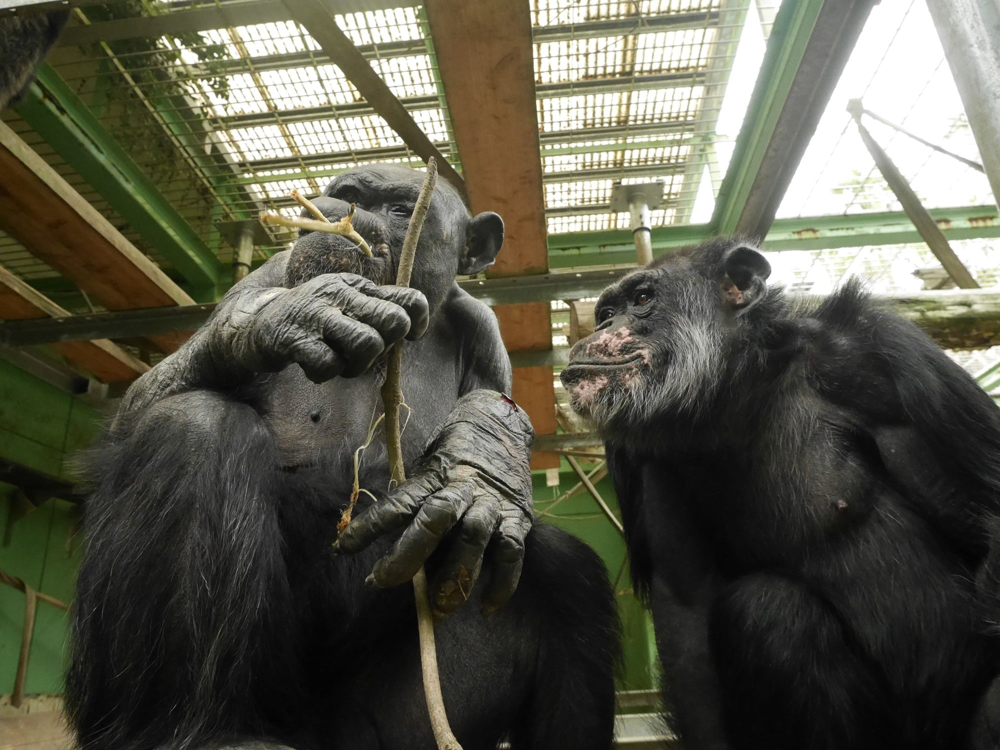Primatologists have documented the phenomenon of "contagious urination" in chimpanzees for the first time.
In public places, people often go to the restroom together, as it allows them to continue their conversation or discuss something in a private setting. This type of behavior is frequently viewed as a social phenomenon, usually linked to cultural traditions and habits. For instance, in Italy, there is a saying: "He who does not pee in company is either a thief or a spy" (Chi non piscia in compagnia o è un ladro o è una spia). In Japan, a special term "tsureshon" (連れション) is even used to describe the situation when people, especially friends, go to the restroom together, highlighting the aspect of social interaction.
Until recently, it was believed that such an effect, specifically its social component, was observed only in humans. However, a team of Japanese primatologists led by Ena Onishi from Kyoto University has disproved this notion. In an article published in the journal Current Biology, the researchers documented a similar phenomenon in great apes.
The idea to study this phenomenon arose after the scientists noted that chimpanzees living in captivity at the Kumamoto city sanctuary often began urinating together—approximately at the same time. The situation reminded the primatologists of human behavior, prompting them to question whether this effect could be as contagious as yawning.

Onishi and her colleagues conducted over 600 hours of observations of 20 chimpanzees and recorded 1,328 instances of urination. The researchers then analyzed the observational data to investigate two aspects: whether there is a pattern in when chimpanzees start urinating together or if it occurs randomly; and whether the presence of other chimpanzees nearby influences this effect, or if it is due to certain social characteristics of the animals, such as their status within the group.
The analysis revealed that chimpanzees tend to go to the restroom together much more often than alone. It turned out that one of the crucial factors is how close the great apes are to each other. When one individual starts to urinate, those nearby are more likely to join in.
Even more interestingly, group hierarchy also plays a role in this behavior. Chimpanzees with lower status joined the collective urination significantly more often than those of higher rank. This indicates that such behavior is influenced not only by physical proximity but also by social relationships within the group.
The researchers hypothesized that "contagious urination" among chimpanzees serves multiple functions. For instance, it may help maintain hierarchy and strengthen bonds within the group, coordinate actions, or demonstrate hidden leadership.
"The discovery surprised us. We did not expect social status to influence this kind of effect. We anticipated seeing the same phenomenon as with 'contagious yawning' in humans—where the closeness of relationships between individuals plays a larger role. Our data showed the opposite: social status is the primary factor," explained Onishi.
This finding will aid scientists in better understanding how everyday physiological actions can impact the social lives of animals. The researchers will continue to observe great apes to uncover the specific functions and mechanisms underlying "contagious urination" in chimpanzees. Additionally, they are interested in exploring whether this phenomenon exists in other animal species.
It is worth noting that to date, "contagious urination," similar to that observed in chimpanzees, has not been found in other animals. However, similar behaviors have been noted across various species. For example, "contagious yawning," in addition to humans, has been documented in dogs, wolves, and even lions.